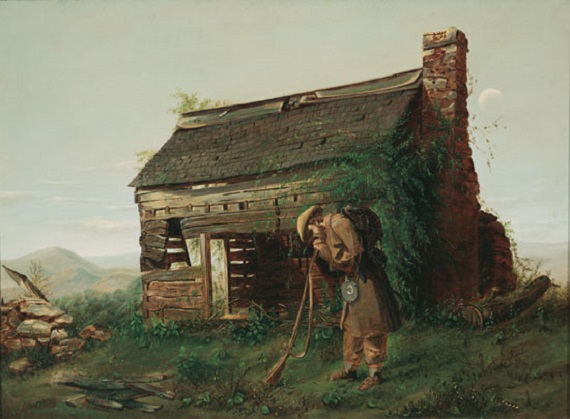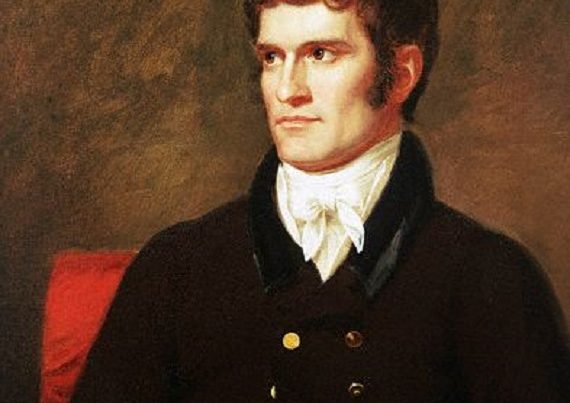History is the propaganda of the victorious.
– Voltaire
According to an explanation of “The Lost Cause” from the web site of the Virginia Historical Society:
Former Confederates crafted a historical interpretation of the Civil War to reconcile the prewar society they admired and the devastation that accompanied southern defeat. The “Lost Cause” narrative was developed by former Confederates who claimed that states’ rights, not slavery, caused the war; that enslaved blacks remained faithful to their masters; and that the South was defeated only by overwhelming numerical and industrial strength. Confederate veteran and memorial associations promoted “Lost Cause” themes to help white southerners cope with the many changes during this era.
While both sides of any war seek to justify their actions, the victor determines the narrative as one of the spoils of war, while the narrative of the vanquished is derided and shouted down until it is quelled and buried. It is thus in the narrative of the so-called Civil War, where even the name given it by the victor has prevailed, to cover the nature of its war of invasion, conquest, and coerced political allegiance. The South’s “Lost Cause” narrative of States’ Rights is thus buried under the North’s “Myth of American History” narrative of slavery as being the cause of the war. But both narratives are in error, for they confound two of the many causes for secession with the single cause of the war, which was secession itself.
With the seven States of the South’s “Cotton Kingdom” out of the Union and set up as a free trade confederation on the southern border of the United States, the North’s nascent “Mercantile Kingdom” (based upon textile manufactures of Southern cotton, the export of Southern staples, and an extortionate tariff that exploited the agricultural South) was threatened with collapse. So Lincoln rebuffed all Southern overtures of diplomacy, launched an armada against Charleston Harbor to provoke South Carolina into firing the first shot, got the war he wanted, and drove the Southern States back into a no-longer-voluntary Union of States at the point of the bayonet. The war was thus not over slavery or States’ rights, but simply Lincoln’s refusal to let the “Cotton Kingdom” go in peace. Virginia’s decision makes it perfectly clear. Upon Lincoln’s call for troops, Virginia, “The Mother of States and of Statesmen,” (having recently determined through her Convention to remain firmly in the Union), voted immediately to secede – with her governor indicting Lincoln for “choosing to inaugurate civil war.”
As for disparaging the claim of the so-called “Cult of the Lost Cause” that the South was defeated only by “overwhelming numerical and industrial strength,” the numbers speak for themselves, although it is only from sources other than “The Myth of American History” and the “Court Historians” who promulgate it that we may glean the Truth. Paul Kennedy, in his book The Rise and Fall of the Great Powers (New York: Vintage/Random House, 1989) pages 178-182, makes the North’s advantage of men, materiel, armies, navies, and industrial might abundantly clear, and makes clear that the disparity steadily increased as the war went on. General Lee, at the Surrender, said that after four years of arduous service his army had been “compelled to yield to overwhelming numbers and resources,” and General Lee never put a political spin on anything.
But perhaps the words of Winston Churchill may underscore the Truth of the war as well as any. Although his mother was an American, and from New York, his account of the war is balanced and unbiased in his monumental four-volume work A History of the English Speaking Peoples (New York: Dodd, Mead & Co., 1958) IV, 172-3:
[T]he disparity between the combatants was evident. Twenty-three states, with a population of twenty-two millions, were arrayed against eleven states, whose population of nine millions included nearly four million slaves… Most of the slaves, who might have been expected to prove an embarrassment to the South, on the contrary proved a solid help, tending the plantations in the absence of their masters, raising the crops which fed the armies, working on the roads and building fortifications, thus releasing a large number of whites for service in the field.
Thus it was that Lincoln issued his Emancipation Proclamation halfway through the war as part of his total war against the South, for, as Churchill stated, the war would not be settled by two or three great battles, but by the piecemeal subjugation of the entire South’s population. Yet even so, it took the United States four years and the bloodiest war in the history of the Western Hemisphere to accomplish this, augmented by Lincoln’s Emancipation Proclamation, the naval blockade of the Southern coast, Sherman’s burning of Georgia and the Carolinas, Sheridan’s burning of the Shenandoah Valley, the bombardment of Southern cities from Fredericksburg and Petersburg to Columbia, Atlanta and Vicksburg, and the North’s refusal to exchange prisoners of war – even to the point of leaving her own soldiers to suffer and die in Southern POW camps rather than to allow Southern POWs to return to Confederate ranks. That in itself speaks volumes…
Thus there is an abundance of Truth in the so-called “Cult of the Lost Cause.”







